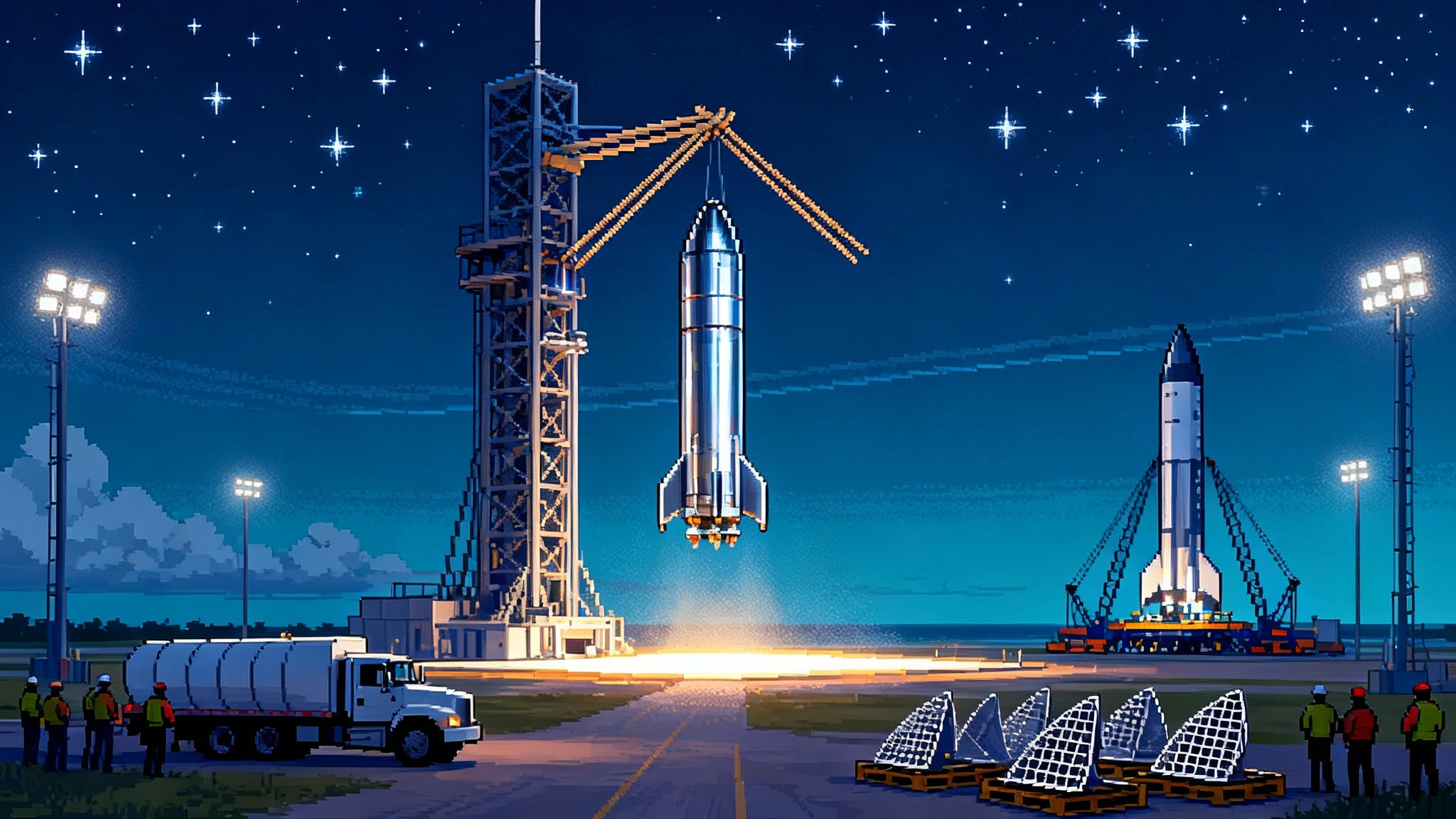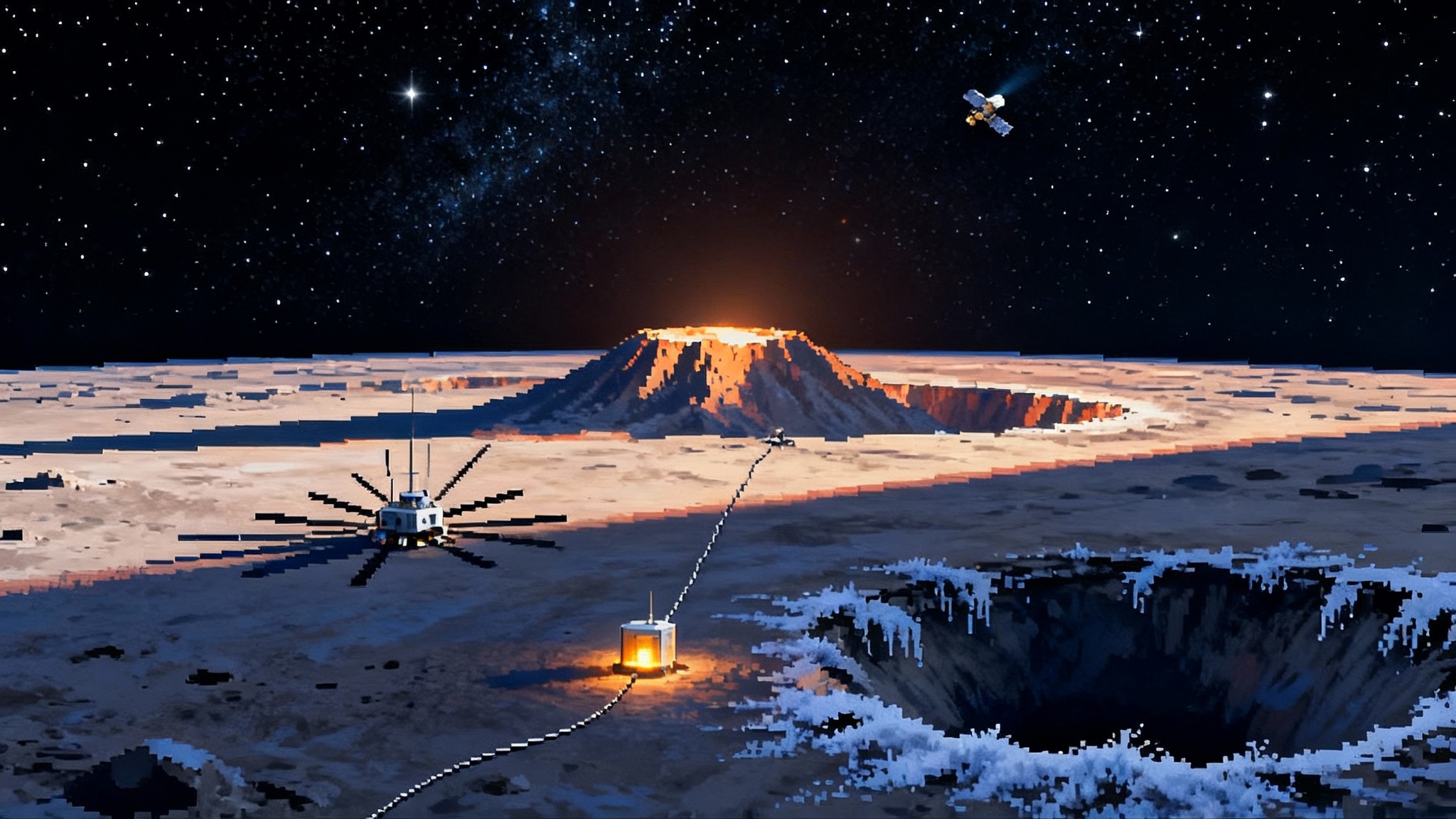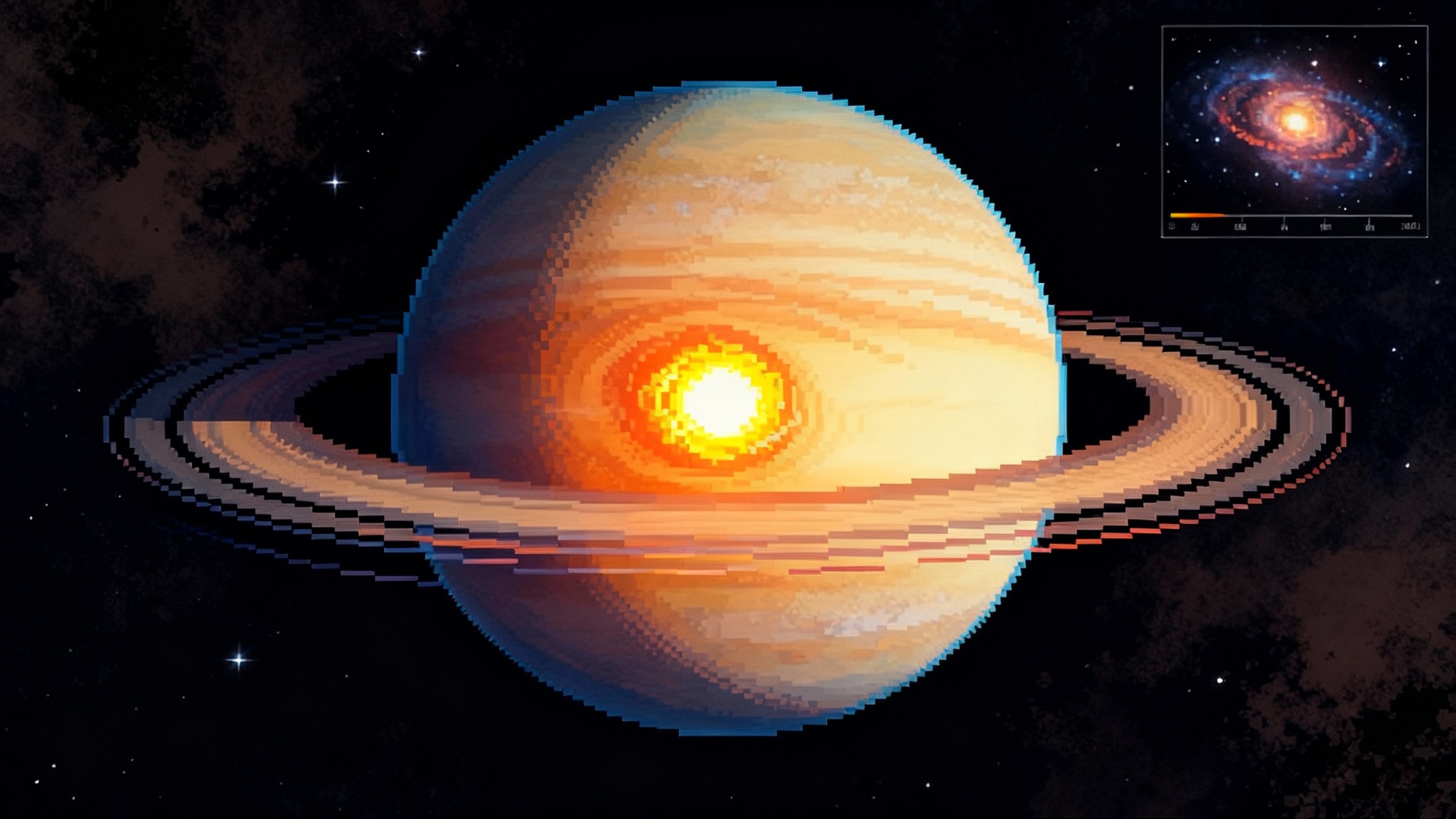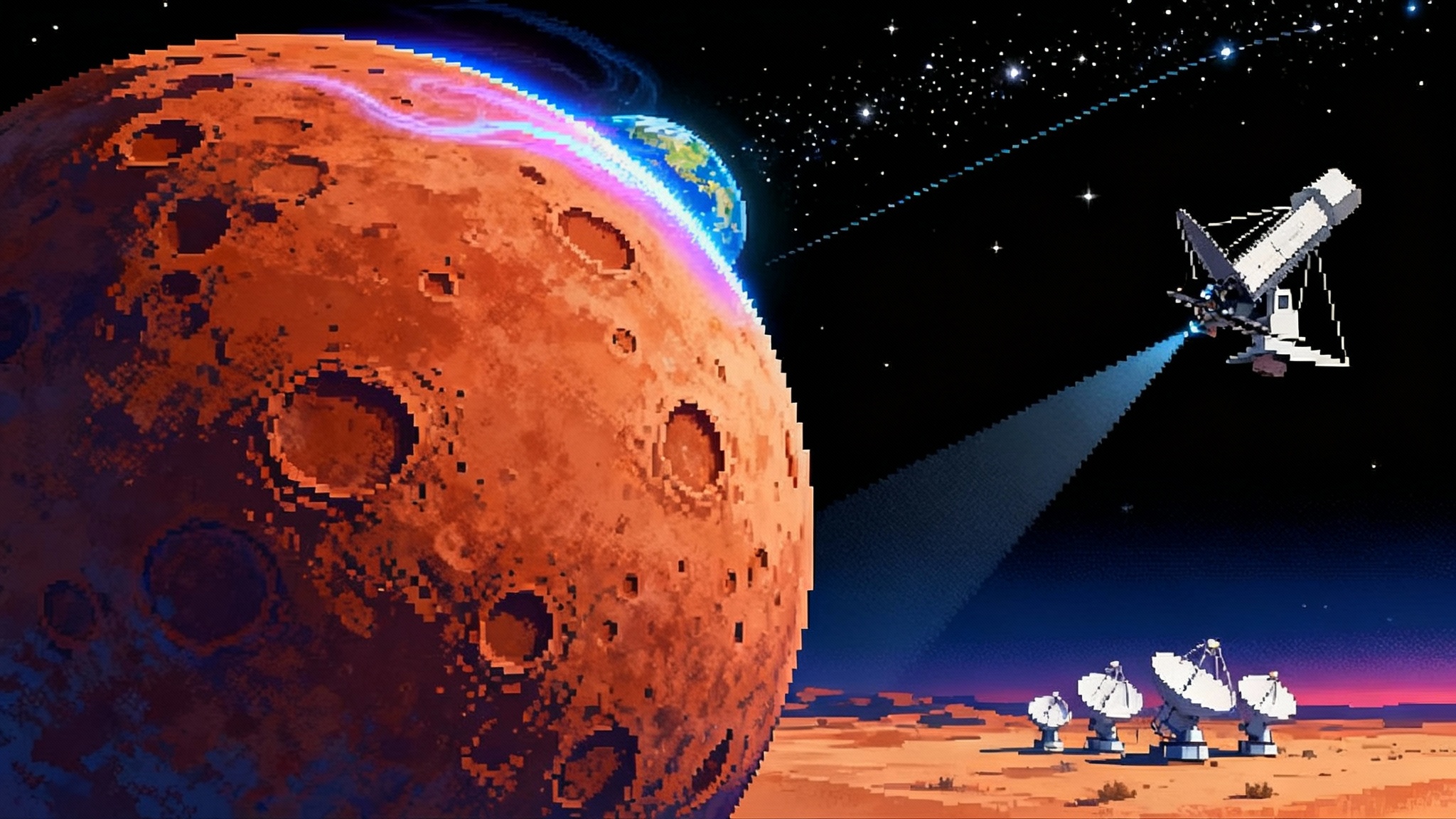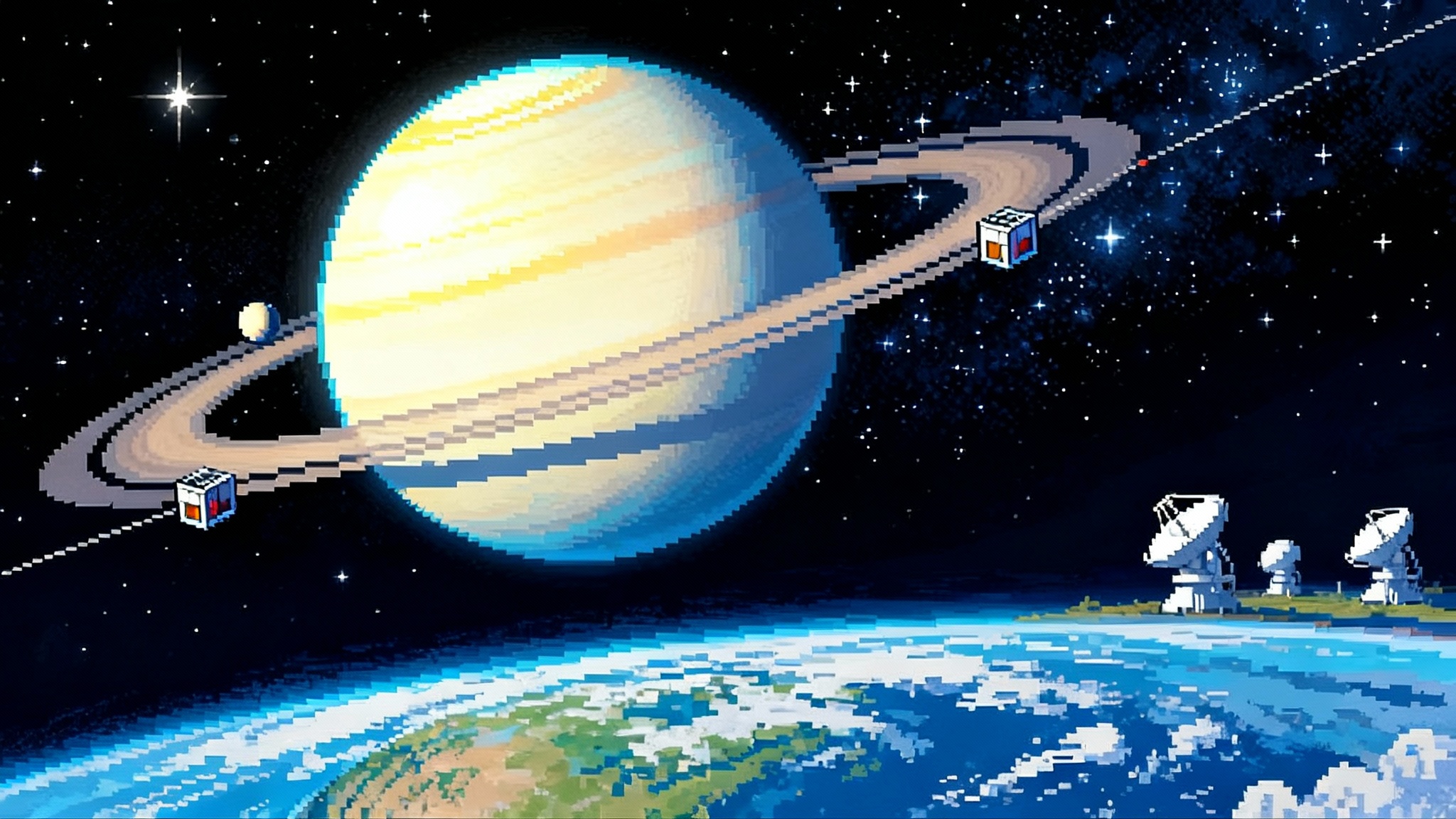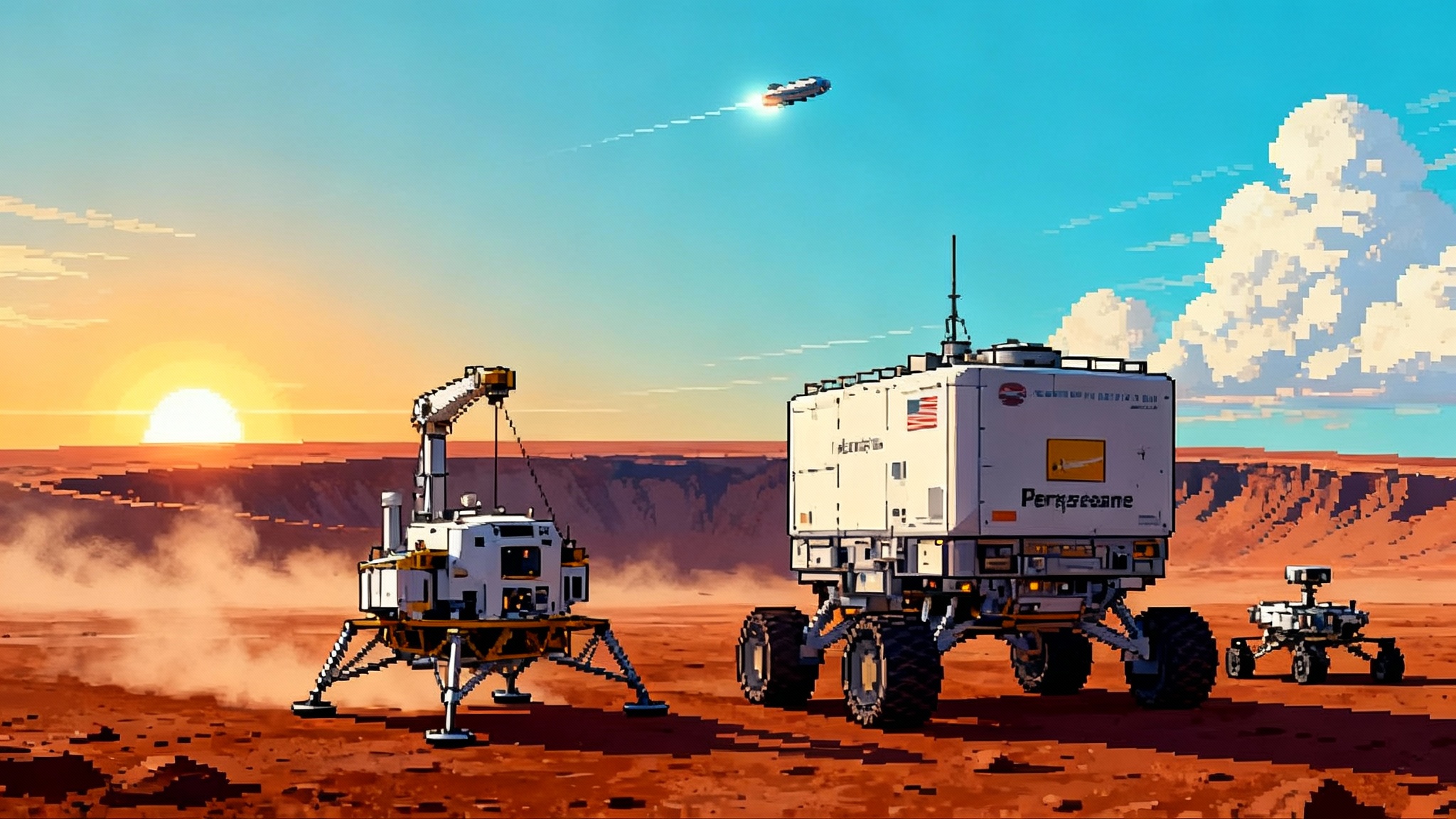Lucy’s bowling-pin asteroid and the Trojan decade ahead
On April 20, 2025, NASA’s Lucy skimmed within 600 miles of asteroid Donaldjohanson and found a young bowling-pin contact binary. Here is what that geometry says about early solar system smashups, and the near‑term moves that can supercharge the Trojan encounters.
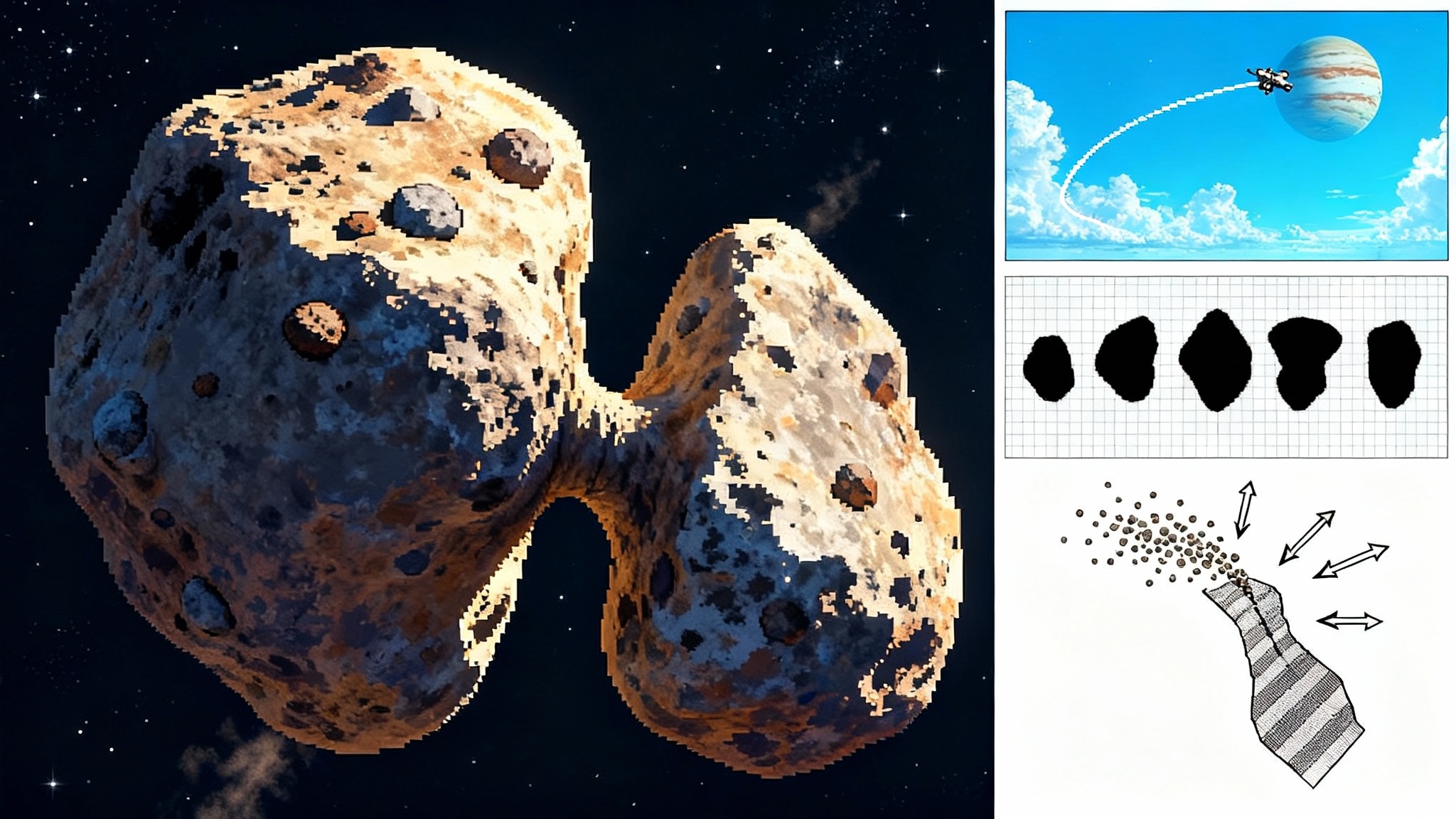
The bowling pin in the belt
On April 20, 2025, NASA’s Lucy spacecraft streaked within roughly 600 miles of main‑belt asteroid Donaldjohanson and saw something striking. The asteroid is not a neat sphere. It is a long, lumpy contact binary, two lobes fused by a narrow neck, with surface textures that look freshly reworked rather than ancient. Early sizing from the first images puts the body at about five miles long and around two miles across at its widest, larger and more complex than pre‑encounter estimates. The encounter was a dress rehearsal for Lucy’s main science campaign at Jupiter’s Trojan swarms, but it was also real science in its own right. See NASA’s first‑look release and images in Lucy April 20 contact binary images.
The headline is the shape. A contact binary forms when two pieces drift together at pedestrian speed and stick instead of shatter. Think of a pair of snowballs pressed together into an hourglass. In space, the glue is gravity and the material is a rubble pile of loosely bound rock and dust. That geometry, plus indications of a relatively young surface, turns Donaldjohanson into a readable record of a specific kind of solar‑system crash.
What the shape says about solar‑system smashups
Contact binaries are slow‑collision fossils. They preserve the traffic rules of the early solar system: speeds, angles, and the abundance of loose, porous material. The narrow neck is a telltale. If the two lobes met gently, grains and cobbles migrated under weak gravity to the lowest‑energy spot, which is often the waist between lobes. Over time, seismic shaking from impacts and subtle thermal effects can rediscover that minimum and funnel more material toward the neck. The result is a structure that looks precarious but can be long‑lived in a quiet neighborhood.
Donaldjohanson is thought to be a fragment from the Erigone family breakup roughly 150 million years ago. For planetary scientists, that age matters. It is young compared with many main‑belt surfaces, which carry billions of years of gardening by micrometeorites and solar radiation. A young rubble pile means less time for space weathering to darken and harden the surface. It also means crater counts, grain sizes, and thermal properties are closer to their post‑formation state, which helps calibrate models of how fast surfaces evolve.
The slow apparent spin seen in approach imaging is consistent with a loosely bound body that has not been spun up to the point of fission by the Yarkovsky O’Keefe Radzievskii Paddack effect, a sunlight torque that can accelerate small objects over millions of years. That is another hint that the surface and interior have not yet been pushed to extremes. If a body like this were spun faster, the neck would be a failure point, shedding pebbles and sand along the equator first, then larger chunks as the effective gravity flips sign. The fact that the neck is intact helps put bounds on the asteroid’s density and cohesion.
Why a young surface is a big deal
Fresh surfaces are diagnostic. On Donaldjohanson, Lucy’s cameras and its thermal infrared sensor turn into a combined thermometer and magnifying glass. The thermal instrument, L’TES, reads how quickly patches of ground heat and cool. Fine dust changes temperature quickly. Coarser gravel and slabs do so slowly. Those measurements, married to color and high‑resolution imagery, can map grain sizes and tell whether the neck is a sink for fine material or a bridge of consolidated blocks.
If you want a concrete Earth analogy, picture a river bar at low flow. Sand migrates to sheltered pockets. Cobbles armor the edges. After a flood, you see fresh, sharp boundaries. Donaldjohanson’s neck could be the asteroid version of that bar, reworked by tiny impacts and thermal cycles rather than water. Spotting those boundaries while the surface is still young helps decode the sequence of events after a breakup: first assembly, then settling, then seasoning by tiny hits.
As we argued in New Glenn and ESCAPADE mission, maturing interplanetary logistics and faster data turns let small teams extract more science between flybys. Donaldjohanson is a chance to prove that playbook before the Trojans.
Dress rehearsal for a decade that could rewrite planet formation
Lucy’s main act runs from 2027 to 2033. Over those years, the spacecraft will fly by multiple Trojan asteroids, primitive bodies that share Jupiter’s orbit in two great swarms. The diversity on offer is the point. The targets range from Eurybates and its tiny moon Queta, to the strangely slow‑rotating Leucus, to the darker Orus, and finally to the almost‑equal‑mass binary pair Patroclus and Menoetius. The official target list and dates are in Lucy’s flyby schedule and targets.
Why these objects could change the textbooks comes down to origins. One class of models says the giant planets migrated, stirring and capturing icy, carbon‑rich bodies from far out and parking some of them at the Trojan points. Another predicts a larger fraction formed near Jupiter and were trapped early. The details in color, chemistry, and especially density will test those models. A rubble pile with comet‑like chemistry but high density says one thing. A porous, ultra‑dark body with very low density says another. Put several examples in a row and you get a pattern rather than a one‑off. For context on how volatile‑rich surfaces can reset our assumptions, see our look at Makemake methane Kuiper Belt playbook.
Donaldjohanson’s lesson plugs directly into that logic. If a young contact binary in the main belt already shows complex geology and regolith sorting, then some of the even older Trojans may hold layered histories that only very close imaging can unravel. Knowing what to look for and how to point the cameras when you have seconds to spare is priceless.
Four near‑term moves that will compound the science return
Here is how the community can turn a successful dress rehearsal into a bigger win before the Trojan campaign begins.
- Ground‑based follow‑ups that matter in months, not years
- Organize a coordinated lightcurve campaign for Donaldjohanson through the 2025 to 2026 apparitions using small and mid‑size telescopes. A dense, globally distributed set of brightness measurements will pin down the rotation state and help resolve whether the lobes precess independently or act as a rigid body. This directly feeds mission pointing predictions.
- Chase stellar occultations by Donaldjohanson and the 2027 Trojan targets. A handful of well‑timed chords from observers across Europe, the Americas, and Africa can deliver silhouette slices with kilometer precision. The International Occultation Timing Association community is built for this kind of work. Publish predicted paths early and update them as astrometry improves.
- Acquire targeted visible and near‑infrared spectroscopy on 8 to 10 meter telescopes for the 2027 Trojans, prioritizing Eurybates and Orus. The goal is a uniform set of taxonomic and slope measurements with consistent calibration. This will make Lucy’s flyby spectra easier to interpret and will highlight places where exposures should dwell for a few extra seconds.
- Add polarimetry where feasible. Polarization phase curves are sensitive to surface texture and can flag unusual regolith, like very fluffy or very compact patches, before Lucy arrives.
- Rapid shape‑model inversion with a public clock
- Combine Lucy’s L’LORRI images of Donaldjohanson with new ground‑based lightcurves to produce a first non‑convex shape model within six weeks of the full dataset release. Use established pipelines for convex inversion, then refine with non‑convex approaches that allow necks and saddles. Post not only the mesh but also the gravity and slope maps derived from a reasonable bulk‑density assumption so that neck stability can be analyzed.
- Publish uncertainty. Attach per‑facet error bars and provide a few bracketing models with different spin‑axis solutions. This makes the shape model useful for testing tracking parameters on the spacecraft rather than being a pretty picture.
- Repeat the same fast‑turnaround flow for each Trojan as data arrive. Discipline helps. Use a standing team with a checklist so that image drop to shape‑and‑slope becomes a two‑week exercise by 2027.
- Dust and regolith simulations that answer a mission question
- Run discrete element method simulations tailored to Donaldjohanson’s measured shape. The priority question is whether the neck is a passive sink for fine grains or a stressed bridge of larger blocks. Vary cohesion and grain‑size distribution across reasonable bounds, then look for observables Lucy can test at the Trojans, such as sharp albedo contrasts at necks or directional landslides near the equator.
- Add thermal cycling. Force the model with realistic day‑night temperature swings and track how cracks propagate and grains migrate over thousands of cycles. The output should be specific, like a predicted fraction of sand‑sized material in the neck compared with the lobes.
- Translate the results into exposure guidance. If simulations suggest that necks tend to be fine‑grained, prioritize thermal emission sampling across the waist at several local times. If bridges are blocky and under tension, plan stereo imaging to pick out boulder fabrics and fault lines.
For a parallel on small‑body operations at speed, see our coverage of Tianwen‑2 quasi‑moon and comet.
- Autonomy and tracking tweaks that buy pixels at closest approach
- Use Donaldjohanson images to tune Lucy’s Terminal Tracking Camera algorithms for elongated, high‑contrast targets. The T2Cam system, built by Malin Space Science Systems and integrated by Lockheed Martin, is designed to lock onto a moving target and keep it centered while the other instruments do the science. Elongated shapes can confuse centroiding if the brightness peak does not match the mass center. Adding a mode that prefers a limb‑fit or a template match instead of a brightness peak will reduce pointing errors.
- Pre‑bake time‑tagged pointing updates that account for target rotation, not just position. For a slow spinner with a strong neck, the limb changes quickly during the last minutes. Feed shape models into the onboard table so the line of sight walks the waist rather than overshooting it.
- Rehearse with KinetX’s navigation team on smearing budgets. L’LORRI’s narrow field of view is unforgiving. A few milliseconds of unexpected smear can erase fine texture. Combine realistic optical navigation residuals with the tuned tracking to set exposure durations that hold contrast without starving the detector.
Who does what, specifically
- NASA Goddard and Southwest Research Institute: publish calibrated Donaldjohanson image and ancillary data as soon as quality checks pass, including spacecraft trajectory kernels and camera pointing geometry. Add a short readme that states any known biases in the first reconstruction.
- Lockheed Martin operations: run a closed‑loop pointing simulation with the tuned T2Cam parameters and share the statistics with the science team so the trade between exposure time and smearing is explicit.
- Johns Hopkins Applied Physics Laboratory and Arizona State University instrument teams: post quick‑look radiometry for L’TES and radiance‑to‑reflectance conversions for L’Ralph that ground‑based observers can use to cross‑calibrate spectra.
- KinetX navigation: deliver a short memo on the last‑minute optical navigation strategy for elongated targets. Spell out the trigger conditions for autonomous retargeting if the centroid jumps due to shape.
- Ground community: schedule a time‑bounded, open data challenge. The task is a non‑convex shape inversion of Donaldjohanson with uncertainty maps. Set a four‑week window. The winning entry is the one that most accurately predicts a withheld image taken at a known geometry. This creates a benchmark before the first Trojan flyby.
What the Trojans could change about planet formation
The Trojans are time capsules from the era when the giant planets re‑ordered the outer solar system. Competing models make different, testable predictions about their densities, colors, and surface textures.
- If many Trojans look like porous contact binaries with very low densities, that supports capture from a colder, more distant zone where ices and organics dominate and collisions were cushioned.
- If they are denser and more consolidated, with fewer necks and more monolithic blocks, that leans toward formation nearer Jupiter and longer thermal processing before capture.
- Color and chemistry gradients across a single body matter. A redder, more organic‑rich neck than its lobes could signal regolith migration. A bluer neck could point to stress‑induced fracture and exposure of fresher material.
- The equal‑mass binary Patroclus and Menoetius will be the keystone. Their bulk density will test whether such pairs formed by gentle coalescence in a disk of pebbles or by exchange capture in a crowded, migrating system.
Donaldjohanson’s youth gives the team a template for reading those clues at speed. The asteroid shows that even a small, young fragment can carry organized geology shaped by gentle assembly and slow reshaping. Scale that up to bodies that have sat at Jupiter’s distance for billions of years and you get the prospect of layered histories that encode where they came from and how fast the early solar system mixed.
The measurement shortlist for 2027 and 2028
To convert that prospect into decisive evidence, here is a concise list of measurements that will move the needle:
- Densities for Eurybates, Leucus, and Orus using combined radio science and shape volumes. Density is the clearest discriminator among origin models.
- Thermal inertia transects across necks or saddles on any elongated targets. That will separate dusty sinks from blocky bridges and test the regolith migration simulations.
- High‑phase‑angle imaging to map forward‑scattering halos. These halos trace fine dust and can reveal very smooth patches that would not show in low‑phase views.
- Coordinated color and infrared mapping across structural boundaries. A material jump at a neck is strong evidence for post‑assembly sorting.
- Opportunistic ring and small‑moon searches during approach and departure. Even null results are valuable constraints on debris populations around Trojans.
The payoff
The Donaldjohanson flyby was billed as a rehearsal. It was that, and it was also a crisp science story about how gentle collisions build fragile worlds and how those worlds mature. The next act, at the Trojans, will tell us whether Jupiter’s traveling companions were born near the giant planet or gathered from the deep freeze and parked in gravitational harbors. The difference is not academic. It changes how we think about mixing across the young solar system, about how quickly material moved, and about how common worlds like ours might be around other stars.
The to‑do list is short and practical. Use small telescopes to keep time on Trojan spins. Invert shapes quickly and publish the error bars. Stress test the tracking algorithms against elongated targets. Push regolith models until they make a falsifiable prediction. Do these things now, while the rehearsal data are fresh and the clock ticks toward 2027. The reward is simple. When Lucy sprints through the Trojan swarms, we will spend every second where it counts most, turning fleeting frames into lasting answers.
